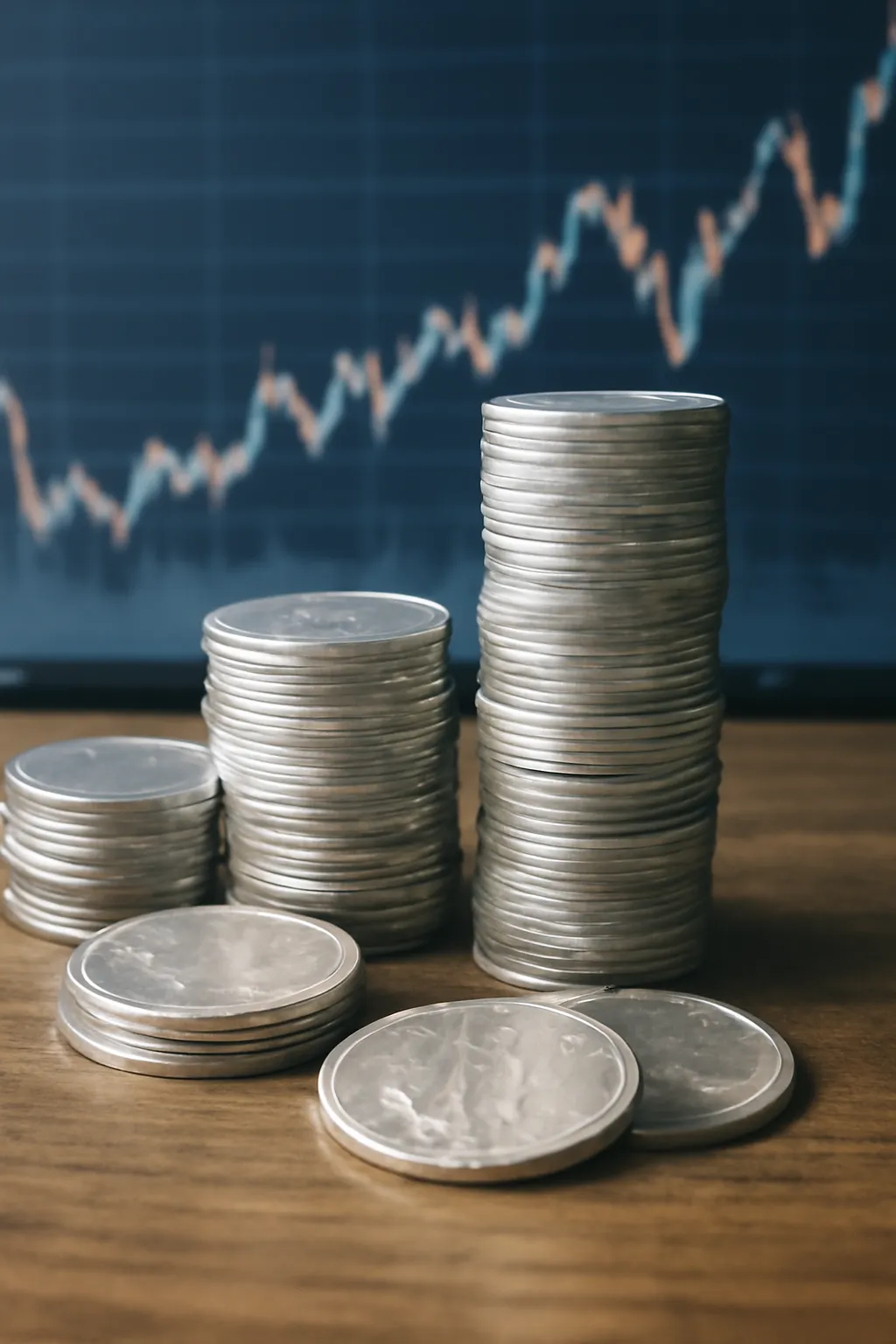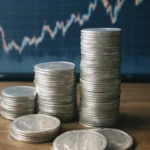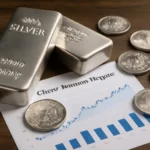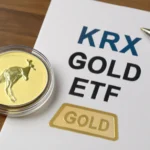Looking to diversify your portfolio with silver? Discover the latest silver investment outlook, effective methods, and the value of silver in today’s market. Will silver continue to be a valuable asset in the coming years?
Silver has long been considered a safe haven for investors, and as global markets become increasingly unpredictable, the appeal of silver as an investment grows stronger. In this article, we will dive deep into the silver investment outlook, focusing on its potential as an asset, effective investment methods, and the factors influencing its value. Whether you’re a seasoned investor or new to the world of precious metals, this guide will provide the insights you need to make informed decisions.
Gold Silver Investment Outlook: A Comparative Perspective
While gold often takes center stage in discussions about precious metal investments, silver also holds considerable value, offering opportunities for diversification in your portfolio. In recent years, silver has attracted attention for its industrial applications, its use in green technologies, and its role as a hedge against economic uncertainty.
The Role of Silver in Modern Markets
Silver’s dual role as both an industrial and precious metal makes it unique. Beyond its traditional use in jewelry and coins, silver plays a crucial role in industries such as electronics, solar panels, and batteries. As global demand for clean energy and technology grows, silver’s industrial demand is expected to rise, which could positively impact its price. This growing demand can provide silver with more price stability than other metals that have fewer industrial uses.
Silver vs. Gold: Investment Appeal
Gold has historically been seen as the primary choice for investors seeking to protect wealth during periods of inflation and market volatility. However, silver tends to outperform gold in terms of percentage gains when market conditions are favorable. Due to its lower price point, silver can offer higher volatility, which means greater potential returns, albeit with more risk. Therefore, investors who are looking to capitalize on shorter-term market movements might find silver a more attractive option compared to gold.
Economic Factors Driving Silver’s Potential
Economic factors such as inflation, interest rates, and global political uncertainty all influence the value of silver. During times of inflation, silver often rises in price as investors seek tangible assets to preserve purchasing power. Furthermore, as governments worldwide introduce stimulus packages or face economic challenges, silver’s appeal as an investment increases due to its historical role as a store of value.
👉 Discover More About Silver Investment Outlook 👈
Silver Investment Method: Exploring Your Options
Investing in silver can take various forms, each offering different levels of risk, liquidity, and potential return. From physical silver purchases to more sophisticated financial instruments, let’s examine the most common silver investment methods.
1. Physical Silver (Bullion and Coins)
The most straightforward approach to silver investment is buying physical silver, such as coins, bars, or rounds. Investors who prefer to hold tangible assets often turn to physical silver because it provides a direct ownership stake in the metal. However, this method comes with storage and insurance considerations. It’s essential to choose reliable dealers to ensure you get authentic silver at fair prices.
2. Silver ETFs (Exchange-Traded Funds)
For investors who want exposure to silver without physically holding the metal, silver ETFs are a popular option. These funds are designed to track the price of silver, providing a more liquid and accessible alternative to owning physical silver. Silver ETFs offer the advantage of easy trading on stock exchanges and no storage concerns.
3. Silver Mining Stocks
Another way to invest in silver is through mining stocks. By investing in companies that mine silver, investors can potentially benefit from the appreciation in silver prices and the growth of the mining industry. However, mining stocks also come with company-specific risks, including management performance, operational challenges, and geopolitical factors in mining regions.
4. Silver Futures and Options
For more advanced investors, silver futures and options provide leveraged exposure to the price movements of silver. These contracts are traded on commodities exchanges, and while they can offer significant profit potential, they also carry high risk due to the volatility of silver prices. This method is suited for investors who have a deep understanding of market dynamics and a higher risk tolerance.
👉 Learn More About Silver Investment Methods 👈
Silver Investment Value: What Drives Its Worth?
Silver’s value is influenced by several key factors, including supply and demand dynamics, economic conditions, and market sentiment. Understanding these drivers can help you evaluate silver’s potential as an investment.
Industrial Demand: A Growing Influence
As mentioned earlier, silver’s industrial demand has become a major factor in its price appreciation. Silver is used extensively in technology, including in solar panels, electric vehicles, and other green technologies. As the world shifts towards renewable energy and more advanced technologies, silver’s role as a critical raw material is expected to grow, which could boost its value.
Investment Demand and Market Sentiment
Much like gold, silver is considered a “safe haven” asset, especially in times of economic uncertainty or financial crises. The demand for silver tends to rise when inflation fears increase, or when the stock market experiences significant volatility. As more investors turn to silver to protect their wealth, the price can see upward pressure.
Supply Constraints: Impact on Prices
The supply of silver is another critical factor in determining its price. While silver is more abundant than gold, it is still a finite resource. Additionally, most silver is mined as a by-product of other metals, such as copper and zinc, which can create challenges in maintaining a steady supply. If demand continues to rise while supply remains constrained, silver prices could experience upward pressure.
Silver as a Hedge Against Inflation
Historically, silver has served as a hedge against inflation, similar to gold. During periods of high inflation, fiat currencies lose their purchasing power, and investors turn to tangible assets like silver. As global inflation rates rise, silver’s appeal as an inflation hedge is likely to increase, making it a valuable asset in an investor’s portfolio.
👉 Understand the Value of Silver Investment 👈
Silver Tax Prospect: What Investors Need to Know
When considering silver as an investment, it’s essential to understand the tax implications that may arise. Silver investments are typically subject to capital gains tax, but the rates can vary depending on your country of residence and the specific investment method used.
Tax Treatment of Physical Silver
In many countries, the sale of physical silver—whether in the form of coins, bars, or rounds—can result in a capital gains tax. The tax rate applied to silver may differ from that applied to other investments, depending on local tax laws. For example, in the United States, silver is often taxed as a collectible, which can lead to a higher tax rate compared to stocks or bonds.
Tax Considerations for Silver ETFs and Stocks
When investing in silver through ETFs or mining stocks, the tax treatment will depend on whether the investment generates dividends or capital gains. In most cases, capital gains tax will apply, but it’s important to consult with a tax professional to understand the specific rules that apply to your situation.
Strategies for Tax Efficiency
Some investors may choose to hold silver investments in tax-advantaged accounts, such as IRAs or retirement accounts, to defer taxes on gains. Others might explore tax-efficient strategies like offsetting gains with losses from other investments (tax-loss harvesting). Always consult a tax advisor to make the most informed decisions regarding tax efficiency.
👉 Explore Silver Tax Prospects and Strategies 👈
Conclusion
In conclusion, silver remains a compelling investment for those looking to diversify their portfolios and hedge against economic uncertainty. With its unique position as both an industrial metal and a store of value, silver offers diverse opportunities for investors. Whether you’re purchasing physical silver, investing through ETFs, or buying silver mining stocks, there are multiple avenues to explore. Understanding the factors that influence silver’s value and considering the tax implications of your investments can further enhance your strategy. As with any investment, it’s crucial to assess your risk tolerance and consult with a financial advisor to make informed decisions.
“Investing in silver is not just about riding the wave of price fluctuations; it’s about understanding the metal’s timeless role in the global economy.”






